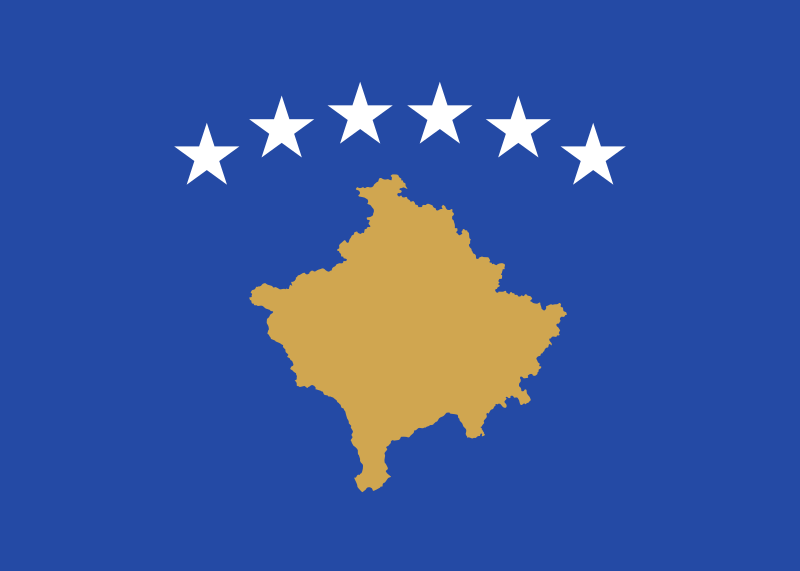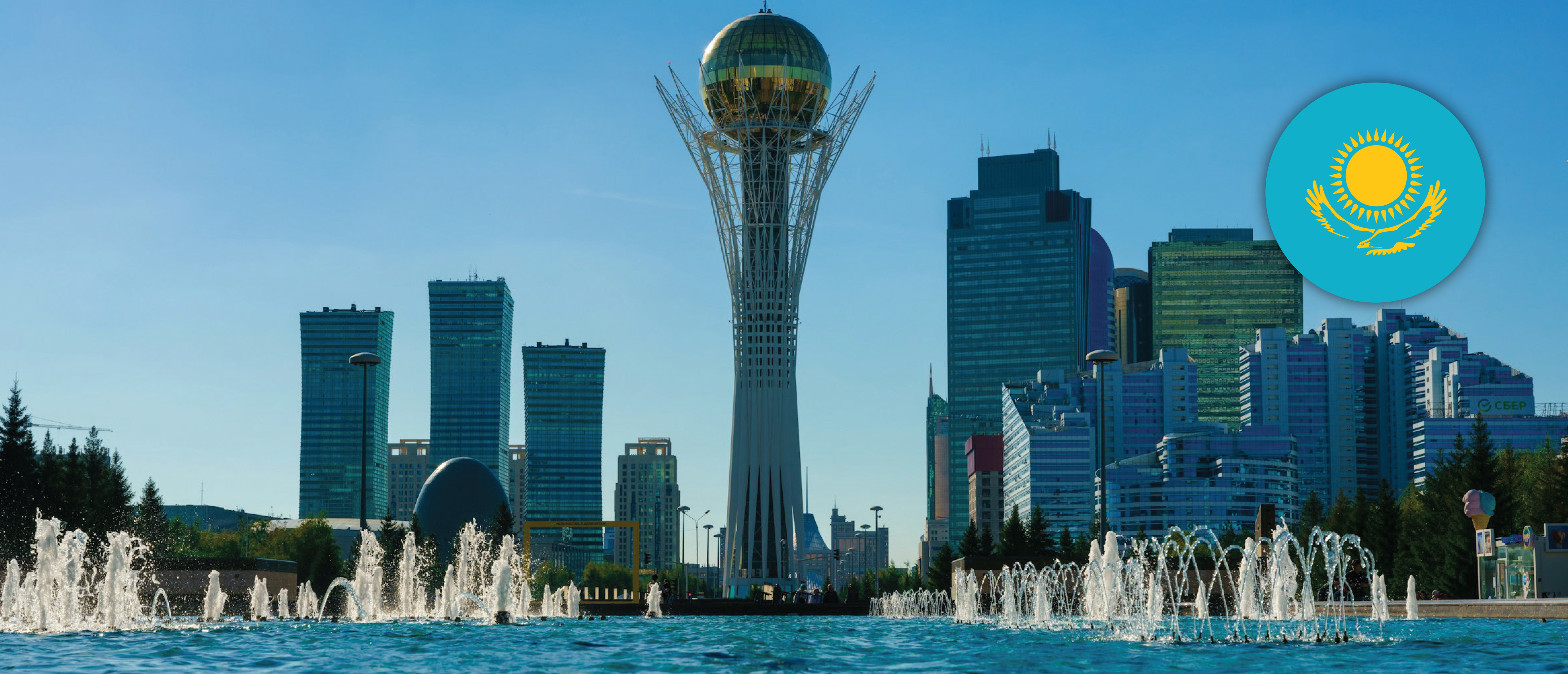General Information
Population
Immigration
Emigration
Working-age population
Unemployment rate
GDP
Refugees, Asylum seekers, IDPs
Citizenship
Territory
Migration Authorities
Responsible Body
Line Ministries
Agencies
Description
The Republic of Kazakhstan is an important migration hub in Central Asia. In 2021, it ranked among the top 15 global destination and origin countries for migrants in 2021. Since 2001, Kazakhstan's population has steadily grown, surpassing 20 million in 2024.
Migration in Kazakhstan is mostly a regional phenomenon, with most movements occurring between Commonwealth of Independent States (CIS) countries. According to the IOM’s World Migration Report 2024, the Kazakhstan-Russia migration corridor ranked 8th globally. In 2020, Kazakhstan remained home to 3,732,073 migrants, most of whom come from Russia (2,211,875), Ukraine (317,803), and Uzbekistan (264,862).
In 2023, Kazakhstan experienced positive net migration for the first time in a decade, with over 25,000 persons arriving for permanent residence and 16,000 leaving the country. Compared to 2022, arrivals increased by 45.7%, while departures decreased by 33.3%. CIS countries accounted for over 86% of arrivals and 77% of departures, with most new arrivals from Russia, Uzbekistan, Turkmenistan, and Kyrgyzstan. The positive migration balance with Uzbekistan was a key factor in Kazakhstan's overall positive net migration in 2023. Meanwhile, departures to Russia among permanent migrants outnumbered arrivals. From non-CIS countries, most flows for permanent residence into and from the country were with Mongolia, China, Türkiye. Temporary residence permits increased significantly, from 530,000 issued in 2022 to 713,000 in 2023. Additionally, a growing number of ethnic Kazakhs are returning to their homeland, with 16,026 obtaining kandas status by September 2023.
It is important to note that the overall migration flows to and from Kazakhstan are much larger when considering border crossing data. For example, in the last quarter of 2023, Kazakhstan saw over 3,4 million arrivals and over 3,2 million departures, mostly from and to Uzbekistan, Kyrgyzstan, Russia and Tajikistan. The total number of arrivals exceeded 14 million in 2023, up from 6,9 million recorded in 2022. Arrivals from Russia has also been notably large in 2022, with nearly a million persons crossing into Kazakhstan in the immediate aftermath of the September mobilisation in Russia. However, reportedly only about 150,000 Russians remained in Kazakhstan in late 2023.
Kazakhstan’s proximity to other Central Asian countries, opportunities on its labour market, and its growing economy have long attracted Central Asian labour migrants, many of whom work on a temporary and seasonal basis. Spikes in labour migration to Kazakhstan often correlate with the unfavourable conditions in Russia – continuing to attract a lion’s share of Central Asian labour migrants – and its restrictive migration policies. Uzbek labour migrants are by far the largest group of foreign workers in Kazakhstan. According to the IOM mobility assessment for December 2023-January 2024, there were nearly half a million Uzbek labour migrants, followed by 70,000 Russians, 27,000 Kyrgyz, and 21,000 Tajiks. Overall, the number of foreign workers in Kazakhstan increased by 47% in 2023 compared to 2022.
Kazakhstan also faces challenges with irregular migration, involving individuals seeking employment and violating migration law in Kazakhstan, or those fleeing political or economic instability in their home countries, mainly within the CIS, such as Uzbekistan, Kyrgyzstan, and Tajikistan. Following the Crocus City Hall terrorist attack near Moscow on March 22, 2024, reportedly carried out by several ethnic Tajiks, Kazakhstan has intensified its crackdown on illegal migration in response to an unexpected influx of workers.
As of mid-2020, UN DESA estimated the stock of migrants from Kazakhstan at 4,203,899, with most settled in the developed regions in Europe and North America. At the same time, the Fund of Compatriots of Kazakhstan claims that this number is approaching 5 million, of which Top 1.6 million Kazakhs reside in China, 821,000 in Uzbekistan, and 591,000 in Russia. Sino-Kazakh relations have deep historical roots and have been further strengthened by the introduction of a visa-free regime in 2023. Additionally, significant Kazakh populations are found in Mongolia (121,000), the Kyrgyz Republic (35,000), Türkiye (30,000), the United States (17,000), Iran (10,000), and Turkmenistan (9,000). As to migration flows, from 16,000 permanent residents who left Kazakhstan in 2023, 73% moved to Russia, 14% to Germany, 3% to the USA and 2% to Poland.
EU Member States, particularly those in Central and Eastern Europe facing growing labour shortages in key industries, are becoming increasingly attractive to labour migrants from Kazakhstan. In 2023, Kazakh nationals held twice as many valid residence permits for employment in Poland (3,943 vs 1,673) and Hungary (1,103 vs 450) compared to 2021. However, family reunification and education remain the most common grounds for issuing residence permits to Kazakh nationals in the EU, who held 78,567 valid permits at the end of 2022, with half issued by Germany, and primarily for family reasons. Spain and France equally issued most permits on family grounds, with over 3,600 and close to 3,000 permits respectively. Meanwhile, the Czech Republic issued 9,039 permits, mostly for education. In 2023, Kazakh nationals received over 18,500 first-time residence permits in the EU, an 11% increase from 2022 and a 47% increase from 2021. Most permits were issued in Poland (15% increase from 2022), Lithuania (sixfold increase from 2022), and the Czech Republic (10% increase from 2021). Kazakh citizens are also increasingly seeking employment abroad in countries such as Japan, the United Kingdom and South Korea (the number of Kazakhs in South Korea may vary from 10,000 to 40,000).
According to UNHCR, 11,277 people from Kazakhstan sought asylum in 2023. The most common destinations included the United Kingdom, Germany and Canada. In 2022, Germany hosted 4,417 Kazakh nationals with refugee status, a significant increase from just 86 recorded the previous year. France hosted the second largest number of Kazakh refugees in the EU, with 543 individuals.
Irregular migration of Kazakh nationals in the EU remains considerably low, while return rates exceeding average 60% since 2015. For example, in 2023, 635 Kazakhs national were retuned out of 1055 who were ordered to leave. In the first quarter of 2024, 215 Kazakh citizens were ordered to leave the EU, with most orders issued by Sweden (50), Lithuania (35) and France (30). During the same period, 160 persons were returned following an order to leave, primarily from Sweden (65) and Lithuania (25). The number of Kazakhs remaining irregularly in the EU surpassed 2,000 persons in 2023, the highest figure recorded since 2014, nearly doubling the average of around 1,000 in previous years.
Kazakhstan endorsed the Global Compact for Migration and is a party to various regional migration dialogues. Acknowledging the growing role of labour migration for socio-economic development, the Ministry of Labour and Social Protection of Population gradually overtakes various functions in the area of migration from the Ministry of Interior. As of 2022, the latter no longer issues work permits to labour migrants nor decides upon refugee status. In 2022, the Migration Policy Concept 2023-2027 was approved by the Government of Kazakhstan. In early 2023, in response to the influx of Russian citizens, Kazakhstan introduced restricted visa-free stay for citizens of the Eurasian Economic Union to a maximum of 90 days within any 180-day period. Key strategic documents such as the "Kazakhstan-2050" Development Strategy and the Strategic Development Plan until 2025 focus on strengthening human capital and improving the quality of life, including for those involved in migration. In his 2021 address, President Tokayev emphasized the significant impact of migration on the labour market where Migration Policy Concept 2023-2027 plays the important role.
Relevant Publications



















































